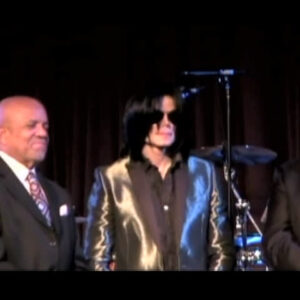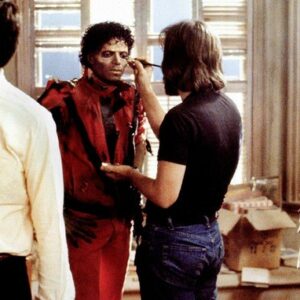Tina Turner didn’t just break the mold—she redefined it. Her towering presence on stage and screen is unparalleled, cementing her place as an icon not only in the music world but in the broader landscape of popular culture. Turner’s unmistakable voice, fiery performances, and powerful persona created a lasting impact that transcended generations. She was a trailblazer, breaking new ground for female artists and changing how music videos were created, perceived, and used as a storytelling medium.
The music industry, like many creative fields, has always demanded that artists not only sing but also act. It demands that they embody the narrative of their songs, transforming the invisible emotion in the melody into something tangible on-screen. Tina Turner, with her captivating on-screen presence, was one of the few who perfected this. Her powerful performances raised the bar for how artists should convey their music through video, embedding emotional depth into every frame, and proving that charisma and storytelling are essential ingredients to an artist’s longevity.
Tina Turner’s Commanding Presence: The Heart of the Performance
From the moment Tina Turner steps on stage or into a scene, she commands attention. It isn’t just her distinctive husky voice that pulls audiences in—it’s the entire package. The way she moves, the intensity in her eyes, the sheer energy she radiates, all contribute to an aura that makes her an undeniable force.
In the age when music videos were beginning to gain prominence, Turner understood that these weren’t just promotional tools—they were platforms to connect on a deeper level with audiences. Her performances in videos like “What’s Love Got to Do With It” and “Private Dancer” are prime examples of how she could turn a three-minute visual into a riveting narrative. The emotion she brought to her music and videos transcended beyond the screen, making viewers feel every word, every note, as if they were living her story.
Turner’s ability to inhabit her songs, making them more than just melodies but emotional experiences, set a new standard for artists. She proved that charisma in music videos wasn’t just about looking good on camera—it was about embodying the emotion and message of the song.
Revolutionizing Visual Storytelling Through Music
While many artists of her time used music videos as simple promotional tools, Tina Turner took it a step further by turning them into miniature films. She understood that music was not just about sound; it was about emotion, narrative, and visual storytelling. The early 1980s were a period of rapid growth for music videos, with MTV transforming how artists reached their fans. Tina Turner, always ahead of her time, embraced this new medium and infused it with cinematic storytelling.
Her music videos were like short films, with compelling visuals that enhanced the emotional power of her music. She worked closely with directors to ensure that her videos weren’t just flashy visuals but extensions of her songs’ stories. For Turner, the music video was a narrative device, a way to deepen the listener’s connection with the music.
Take, for instance, the video for “We Don’t Need Another Hero,” which was as much a cultural statement as it was a music video. Filmed for the “Mad Max: Beyond Thunderdome” movie, it showed Tina as a warrior queen in a dystopian world, amplifying the song’s themes of survival, defiance, and hope. It wasn’t just a music video—it was a powerful visual experience, and it left an indelible mark on viewers. This cinematic approach was new to music videos at the time, but it became a blueprint for future artists and directors.
Collaborations with Pioneering Directors
What made Tina Turner’s music videos stand out even further were her collaborations with some of the most visionary directors and filmmakers of the time. Directors like Brian Grant, Russell Mulcahy, and David Mallet brought a cinematic flair to her music videos, elevating them from mere promotional tools to artistic works in their own right.
Turner’s openness to experimentation and desire to push the boundaries of the music video format allowed these directors to explore new techniques and styles. They incorporated special effects, dynamic camera angles, and storytelling techniques that were more akin to feature films than traditional music videos. Her willingness to embrace these innovations set her apart from her peers.
Turner’s collaboration with these directors wasn’t just a partnership—it was a meeting of creative minds, all working toward the common goal of creating something extraordinary. The resulting videos pushed the boundaries of what music videos could be, showing that they could be just as emotionally powerful and visually stunning as any other form of cinema.
Breaking Gender and Age Barriers
In an industry that often prizes youth and male-dominated narratives, Tina Turner shattered gender and age stereotypes in a way that few have. She rose to global stardom in her mid-40s, a time when many female artists are told to slow down or conform to societal expectations of aging. Turner didn’t just reject these limitations—she obliterated them.
Her groundbreaking success with her 1984 album Private Dancer, released when she was 44, was a testament to her enduring talent and relevance. Turner showed the world that artistry has no age limit, and that women, in particular, could reinvent themselves, evolve, and remain at the top of their game well into their later years.
Her music videos reflected this attitude. They showed a woman in full control of her image, her body, and her narrative. Turner’s videos were powerful affirmations of her autonomy and artistry. They celebrated not just her music but also her resilience, her strength, and her refusal to be limited by societal expectations.
Fashion and Aesthetics: A Visual Signature
Tina Turner was not just a musical powerhouse—she was a style icon. Her bold fashion choices played an integral role in her music videos, helping to create a distinct visual identity that set her apart from other artists. Turner’s fashion was more than just a statement; it was an extension of her artistry. Her looks were as dynamic as her performances, and they contributed to the narrative of her music.
Whether it was the spiked wigs, sequined dresses, or leather outfits, Turner’s fashion sense was unapologetically bold, reinforcing her image as a woman who defied expectations. Her style wasn’t just about looking good—it was about projecting confidence, power, and individuality. In doing so, she helped shift the focus of music videos from being purely auditory experiences to full-fledged visual spectacles.
Turner’s fashion also helped set the stage for future artists, particularly female performers, who understood that cultivating a visual identity was just as important as creating good music. Her videos were not just memorable for the music—they were visual feasts, with every outfit carefully chosen to complement the mood and tone of the song.
Cultural Impact: Redefining the Music Video Landscape
Tina Turner’s music videos were more than just entertaining—they were cultural milestones. They reflected the zeitgeist of their time while also influencing the future of music video production. Turner’s approach to music videos, which combined music, fashion, and narrative storytelling, helped to redefine the medium. She showed the world that music videos could be works of art, capable of delivering powerful emotional experiences.
Her influence can be seen in the work of countless artists who followed in her footsteps. Artists like Beyoncé, Madonna, and Lady Gaga have all taken a page from Turner’s book, using music videos as platforms to not only promote their music but to tell stories, make statements, and create lasting visual legacies. In many ways, Turner laid the groundwork for the modern music video, where the visuals are just as important as the song itself.
But Tina Turner’s cultural impact wasn’t limited to the music video format. She broke down barriers for women, for older artists, and for performers of color. She showed that an artist’s worth isn’t defined by their age, gender, or background, but by their talent, their passion, and their ability to connect with audiences. Turner’s influence extended far beyond her own career—she paved the way for future generations of artists to follow their own paths, no matter the obstacles they faced.
Legacy: A Standard for Future Generations
In the history of popular music, few artists have left as indelible a mark as Tina Turner. Her music videos, with their cinematic storytelling, bold fashion, and emotional depth, set a new standard for the industry. She showed that music videos could be more than just promotional tools—they could be vehicles for artistic expression, cultural commentary, and personal storytelling.
Turner’s legacy lives on in the work of the countless artists she influenced, from her pioneering approach to music videos to her defiance of societal expectations. She will always be remembered as an artist who broke the rules, pushed the boundaries, and created a lasting impact on the music world. In the words of her hit song, Tina Turner was “simply the best,” and her music videos will continue to inspire and influence for generations to come.





